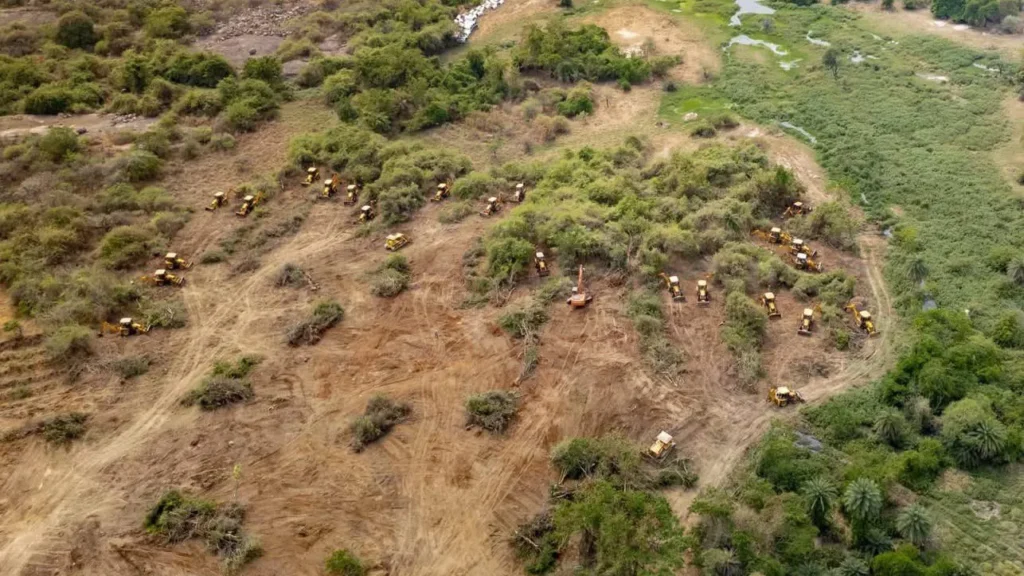Hyderabad’s Kancha Gachibowli Forest Faces Clearance Amid Protests and Legal Battles


The Telangana government has begun clearing 400 acres of land in Kancha Gachibowli, adjacent to the University of Hyderabad, despite widespread protests from students, faculty, and environmental activists. Bulldozers have been operating continuously, rapidly transforming what was once a dense green expanse into barren land.
The deforestation has triggered heated debates on urban planning, conservation, and legal definitions of forest land. Activists argue that the area, often referred to as the Kancha Gachibowli Forest (KGF), serves as a critical ecological buffer for Hyderabad, absorbing carbon emissions and mitigating extreme weather conditions.
Kancha Gachibowli Forest is a unique ecosystem with over 455 species of flora and fauna. The forest provides habitat to rare grassland birds, such as the Indian Hoopoe and the Oriental Skylark, whose numbers have been declining due to habitat loss. Additionally, it is home to Murricia hyderabadensis, a spider species found nowhere else in the world.
Ecologists warn that clearing this green cover could have long-term consequences, including:
Temperature Rise: Experts estimate a 1 to 4°C increase in local temperatures due to the loss of tree cover.
Air Quality Deterioration: With fewer trees to filter pollutants, Hyderabad’s air quality could worsen, exacerbating respiratory diseases.
Wildlife Displacement: The destruction of natural habitats may push species toward urban settlements, increasing human-animal conflicts.
Following the land clearing, multiple public interest litigations (PILs) have been filed in the Telangana High Court, challenging the government’s actions. The petitioners argue that the forest meets the criteria of a “deemed forest” under Supreme Court rulings and should be legally protected.
Environmental groups have also urged the court to grant the land a national park status, ensuring its preservation. The High Court has taken cognizance of the matter, with hearings expected in the coming days.
The Telangana government maintains that the land is state-owned and does not fall under officially designated forest areas. Officials justify the clearance as a step toward expanding Hyderabad’s infrastructure, including IT parks, business hubs, and improved road connectivity.
A government spokesperson stated:
“Hyderabad is emerging as a global IT hub, and such projects are essential for economic growth. We are committed to sustainable development and will take steps to compensate for the environmental impact.”
Despite these assurances, opposition to the project is intensifying. Student groups, environmental organizations, and local residents have staged demonstrations, urging authorities to halt further destruction. Hashtags like #SaveKGF and #HyderabadForestsMatter are trending on social media, amplifying the demand for conservation.
As the legal battle unfolds, the situation raises fundamental questions about how Hyderabad can grow without compromising its natural heritage. The conflict highlights the urgent need for sustainable urban planning that balances development with ecological preservation.